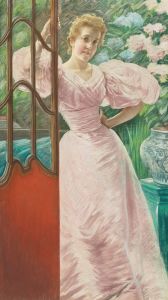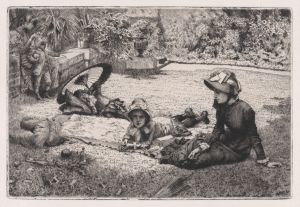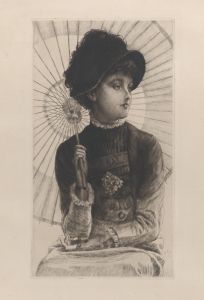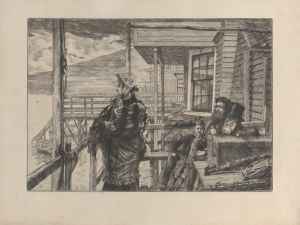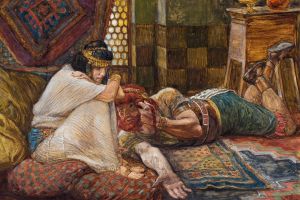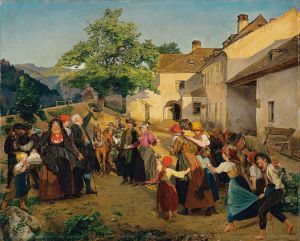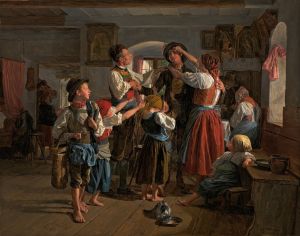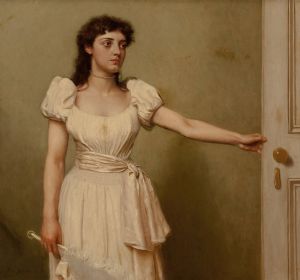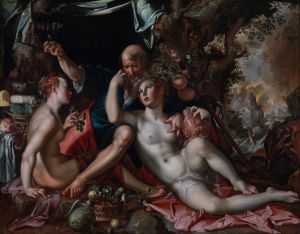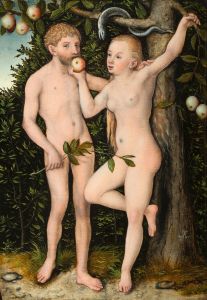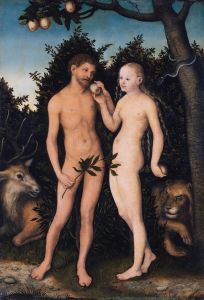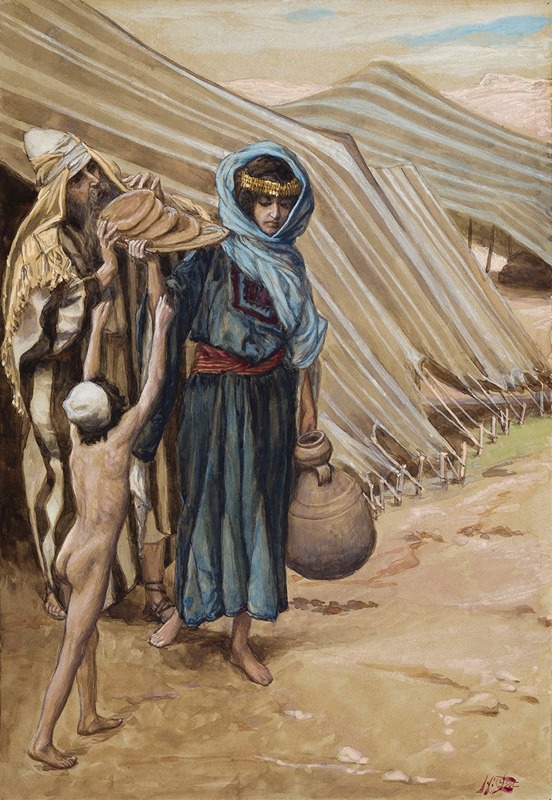
Hagar Departeth From Abraham
A hand-painted replica of James Tissot’s masterpiece Hagar Departeth From Abraham, meticulously crafted by professional artists to capture the true essence of the original. Each piece is created with museum-quality canvas and rare mineral pigments, carefully painted by experienced artists with delicate brushstrokes and rich, layered colors to perfectly recreate the texture of the original artwork. Unlike machine-printed reproductions, this hand-painted version brings the painting to life, infused with the artist’s emotions and skill in every stroke. Whether for personal collection or home decoration, it instantly elevates the artistic atmosphere of any space.
James Tissot's painting "Hagar Departeth From Abraham" is a significant work that reflects the artist's deep engagement with biblical themes. James Tissot, a French painter and illustrator, is renowned for his detailed and evocative depictions of biblical stories. Born in 1836, Tissot initially gained fame for his society paintings in Paris and London, but later in his career, he turned his focus to religious subjects. This shift was partly inspired by a profound spiritual awakening he experienced in the 1880s.
"Hagar Departeth From Abraham" is part of Tissot's ambitious series of watercolors illustrating the Bible, known as "The Life of Our Lord Jesus Christ" and "The Old Testament." These works were created after Tissot's extensive travels to the Middle East, where he sought to capture the landscapes and cultural settings of biblical times with authenticity and accuracy. His dedication to historical and cultural detail is evident in his biblical series, which was well-received for its meticulous research and vivid portrayal of biblical narratives.
The painting depicts a poignant moment from the Book of Genesis in the Old Testament. The story of Hagar, Abraham, and Sarah is a complex narrative involving themes of faith, obedience, and divine intervention. According to the biblical account, Hagar was an Egyptian servant of Sarah, Abraham's wife. When Sarah was unable to bear children, she offered Hagar to Abraham as a concubine, and Hagar bore Abraham's first son, Ishmael. However, tensions arose between Sarah and Hagar, leading to Hagar's departure.
In Tissot's depiction, the emotional gravity of the scene is palpable. The painting captures the moment when Hagar, accompanied by her son Ishmael, leaves Abraham's household. Tissot's use of color, light, and composition emphasizes the emotional and spiritual dimensions of the narrative. The figures are rendered with a sense of realism and empathy, inviting viewers to reflect on the human experiences underlying the biblical text.
Tissot's work is characterized by its attention to detail and historical accuracy, which he achieved through his studies and travels. His biblical illustrations, including "Hagar Departeth From Abraham," are noted for their attempt to present the stories in a manner that is both visually compelling and faithful to the scriptural accounts. The series was published in the late 19th century and gained significant acclaim, contributing to Tissot's reputation as a leading biblical illustrator of his time.
Today, Tissot's biblical paintings are appreciated for their artistic merit and their contribution to the visual interpretation of biblical stories. "Hagar Departeth From Abraham" remains a testament to Tissot's skill in capturing the emotional and spiritual essence of the biblical narrative, offering viewers a window into the ancient world through the lens of 19th-century art.






